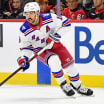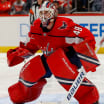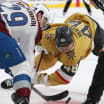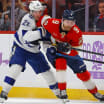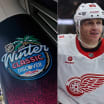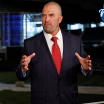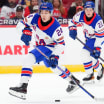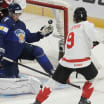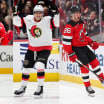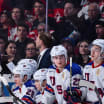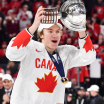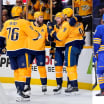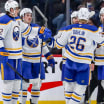MONTREAL -- Well, it's not as big as Wayne Gretzky to the Los Angeles Kings from the Edmonton Oilers in 1988, the NHL trade against which all others are judged.
Probably not the 1934 earthquake of the Montreal Canadiens trading Howie Morenz, voted the greatest hockey player of the first half of the 20th century, to the Chicago Black Hawks -- when their team nickname was two words.
Maple Leafs no strangers to blockbusters
Phaneuf trade latest earth-shaker in Toronto history
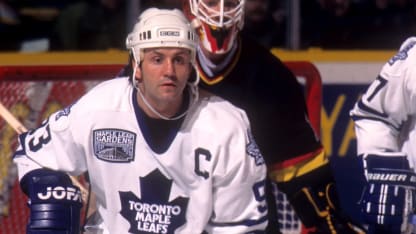
© Bruce Bennett/Getty Images
Was it on a par with the Detroit Red Wings unloading Terry Sawchuk to the Boston Bruins in 1955? The Canadiens shuffling Jacques Plante to the New York Rangers in 1963, in a multiplayer deal that brought fellow goalie Gump Worsley to Montreal?
How about the Black Hawks stripping future Hall of Famers Glenn Hall and Ted Lindsay from Detroit in 1957? Or the Bruins poaching Phil Esposito from the Blackhawks -- now one word -- in 1967?
Maybe not as big as the Canadiens dealing goaltending legend Patrick Roy to the Colorado Avalanche in 1995, a trade that literally gives Montreal fans the shakes every Dec. 6.
In the days of those blockbusters, "social media" was a sportswriter cracking a beer with the players and telling no tales out of school.
The nine-player trade Tuesday between the Toronto Maple Leafs and Ottawa Senators, Maple Leafs captain Dion Phaneuf the centerpiece of the mega-deal, pretty much shut down hockey's corner of the Internet.
It wasn't exactly a quiet news day before this hockey hurricane blew through.
Tuesday marked 50 years to the day the NHL doubled in size for the 1967-68 season, the Board of Governors conditionally awarding franchises to Philadelphia, Los Angeles, Pittsburgh, San Francisco, Minneapolis-St. Paul and St. Louis.
Fans in Montreal and Philadelphia, meanwhile, were talking about the trade that 21 years to the day had seen Montreal deal future star John LeClair with Eric Desjardins and Gilbert Dionne for Mark Recchi and a third-round (No. 74) 1995 draft selection. That pick yielded Martin Hohenberger, an Austrian who would never play an NHL game.
And New Jersey Devils legend Martin Brodeur was behind a microphone digging into his deep memory bank, hours from having his No. 30 sweater retired at Prudential Center, one more stop on his inevitable road to the Hockey Hall of Fame.
The significance and impact of a trade is a very subjective thing.
Once it was all about the heart, the salary cap being a hat you bought with your first paycheck. It was about a 14-year-old kid -- this one -- almost crying himself to sleep on Nov. 4, 1971 when goalie Rogie Vachon, his first genuine hockey hero, was traded by the Canadiens to Los Angeles. It didn't matter who was going with Vachon or who was coming back.
As the game grew to become a billion-dollar-plus business, trades have been made to clear cap space; to open roster spots for youngsters; to shed soon-expiring contracts a club knows it won't be able to renew, come the unrestricted free agency circus.
The optics alone of the Maple Leafs-Senators trade is interesting, the rivals in the so-called Battle of Ontario seemingly unlikely dance partners anywhere but in the corners, with bad intentions.
In 2013, authors Andrew Podnieks and Rob Del Mundo combined to write "The Best, Worst and Biggest NHL Trades of All Time!" (The exclamation mark is theirs). Since it's a chronological list of 58 transactions from 1930 through 2007, they wisely steered away from ranking the deals. Thus, Gretzky to Los Angeles is only the 32nd to appear.
But their first, coincidentally, is the Oct. 11, 1930 trade that brought Francis "King" Clancy from the Senators to the Maple Leafs for Art Smith, Eric Pettinger and the princely sum of $35,000.
The Senators had no money and Clancy was a hugely popular two-time Stanley Cup champion who could fatten Ottawa's coffers if he played elsewhere.
All King did was become part of the Maple Leafs fabric and lore, paired on the blue line with Toronto's first captain, Hap Day, and off the rink, behind the bench as coach and in the executive suites in a variety of key roles.
In 1939, the Maple Leafs sent five players to the New York Americans -- Buzz Boll, Busher Jackson, Doc Romnes, Jim Fowler and Murray Armstrong -- to acquire Sweeney Schriner, the 1935 Calder Trophy winner as the NHL's top rookie. If they had Twitter, Toronto fans wouldn't have reacted kindly to the dispatch of Jackson, a five-time all-star and one-third of the "Kid Line" with Joe Primeau and Charlie Conacher.
The authors asked whether a Toronto deal with Montreal on Sept. 10, 1943 was the "greatest swindle ever," and they might have a point regarding a trade that sent Frank Eddolls to the Canadiens in return for junior prospect Ted "Teeder" Kennedy, who would become one of the Maple Leafs' greatest stars.
There would be a seven-player post-war deal in 1947, Toronto's acquisition of Max Bentley from Chicago the key to that one.
Red Kelly came to the Maple Leafs in 1960 from Detroit for Marc Reaume. A dependable defenseman, Kelly was the NHL's first rearguard to score 100 goals in a career; on his way to the Hall of Fame, he won the Stanley Cup twice, the Lady Byng Trophy four times, the Norris once, coached Los Angeles and Toronto, and was elected to Canadian parliament.
Not as good a trade for Toronto was the seven-man 1964 deal with the New York Rangers -- Dick Duff, Bob Nevin, Arnie Brown, Bill Collins and Rod Seiling headed to New York with Andy Bathgate and Don McKenney coming north.
An eight-man trade on March 3, 1968 was massively emotional on many levels, with Toronto sending Frank Mahovlich, Pete Stemkowski, Garry Unger and the rights to Carl Brewer to Detroit for Norm Ullman, Paul Henderson, Floyd Smith and Doug Barrie.
Mahovlich, nicknamed the "Big M," had feuded forever with Maple Leafs GM and coach Punch Imlach, no matter that he was the club's best left wing on its 1960s dynasty.
Imlach ragged on Mahovlich constantly, sending his big forward to the hospital with stress-related depression. The trade with Detroit soon would send the "Big M" to the Canadiens, where he would flourish playing with his brother, Pete.
There were deals involving name players in the 1970s: Toronto traded goalie Bernie Parent to Philadelphia, and sent eventual NHL ironman forward Doug Jarvis to the Canadiens before he ever played a game for the Maple Leafs.
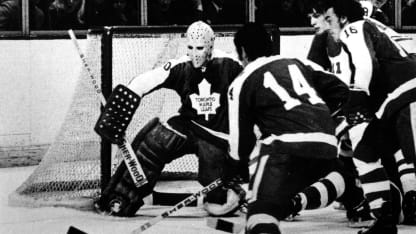
© B Bennett/Getty Images
Much harder on the hearts of fans was the Dec. 29, 1979 trade of Lanny McDonald and Joel Quenneville, today Chicago's coach, to Colorado for Wilf Paiement and Pat Hickey.
Imlach had been scrapping bitterly with Darryl Sittler, but unable to trade his captain, whose contract included a no-trade clause, he dealt McDonald, Sittler's best friend.
It was the beginning of perhaps the darkest period in Maple Leafs history, the 1980s a black hole that included the trade, finally, of Sittler to the Flyers in 1982.
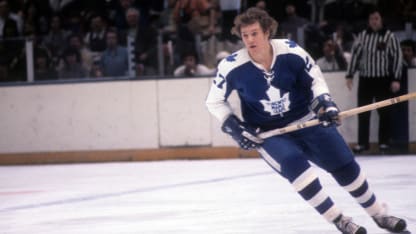
© Melchior DiGiacomo/Getty Images
Fast forward a decade and you'd find Toronto's biggest deal, numbers-wise, ever done. Doug Gilmour headed the 10-man trade, coming from Calgary with four Flames on Jan. 2, 1992 for five Maple Leafs.
Gilmour threw his new team on his back and quickly became one of the most popular players in franchise history.
Two years after Gilmour landed, another fan favorite was sent packing, one more arriving in his place. Scrappy forward Wendel Clark was among four Maple Leafs dealt to the Quebec Nordiques, future captain Mats Sundin coming the other way.
Toronto is making strides to rebuild, approaching their 2017 centennial well aware the year also will mark precisely a half-century from their most recent championship.
They've not had the parts in some years to make any kind of trade that would be considered a blockbuster. If the trade Tuesday has earned that term for some, it's because of the number of players and contract terms involved, and that Phaneuf, captain for the past six seasons, moves to archrival Ottawa.
The principals were all saying good things on Tuesday, everyone happy for the move, eager for the fresh start, smart to the business and the fortunes, financial and hopefully those of performance, to be realized.
Hearing the criticism in 1979 for shipping McDonald to Colorado, Imlach snapped: "What is this, kindergarten or a country club? … I don't care who is unhappy."
For now, it's all smiles in Toronto and Ottawa.
Phaneuf will make his Air Canada Centre return on March 5, not a stitch of blue on his new uniform. They might already be pitching the big tent for the circus that's coming to town.

